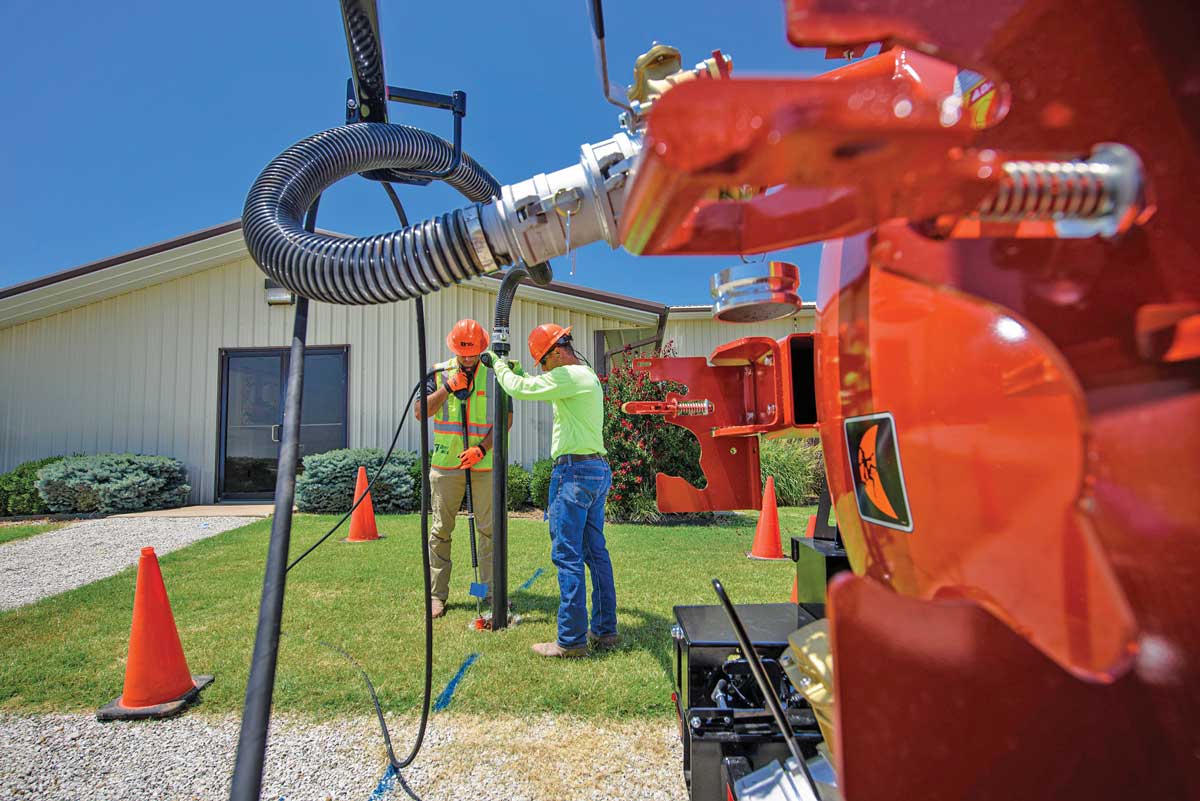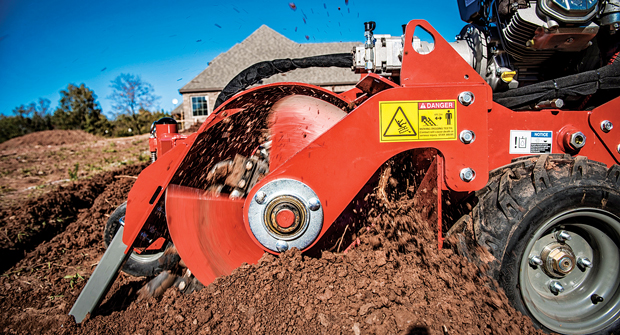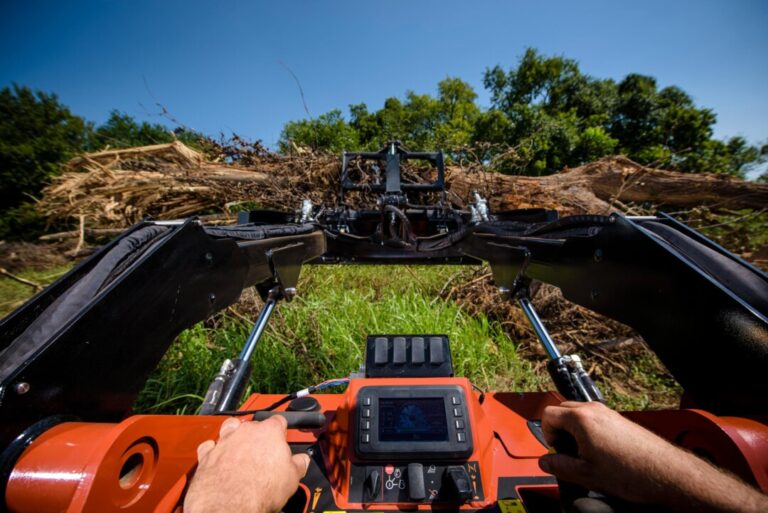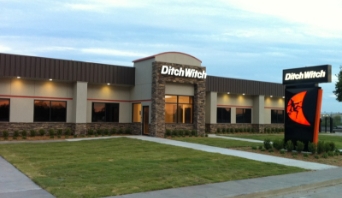By Chris Thompson, vacuum excavation product manager for Ditch Witch
As the underground utility network becomes increasingly more complex and congested, underground professionals know that there is no room for error. With the demand for HDD projects on the rise, vacuum excavators are becoming a crucial tool aiding in damage prevention and jobsite productivity. In a process known as potholing, which uses a soft excavation method – a vacuum excavator – in lieu of a shovel or backhoe to make a hole and remove debris, operators can effectively, efficiently and safely uncover and navigate around existing utilities.
To keep jobsites efficient and crews safe, it is paramount to adhere to and understand proper potholing techniques. Here are three potholing best practices to help underground construction professionals improve efficiency, increase productivity and maximize jobsite safety.
Properly Starting a Pothole
The first step to any successful underground construction project is to locate utilities. Crews must call 811 before breaking ground, then after the jobsite is marked, it is recommended that contractors verify the locates with their own locators. By verifying the locate before digging, contractors can get a vital understanding of the jobsite’s layout and develop an educated construction plan.
The second step is to expose the utility by using a vacuum excavator. Utilizing either air or water, contractors can safely dig underground to an existing utility, ensuring it is visible from ground level before the bore. As a best practice, contractors should excavate to the depth of the bore, especially when going under utilities so operators can physically see the drill bit and pipe safely passing under the utility. Without this best practice, operators can potentially strike or damage a utility, causing costly downtime and risking operator safety.
Additionally, contractors should start small – utilizing air or water excavating method – and expand as needed. This ensures that contractors won’t make a bigger hole than what is required, streamlining efficiency and keeping operators productive.
However, if contractors are struggling to expose utilities in hard soil or heavy clay, hot water heater packages are an option with most vacuum excavators. Using hot water can help break down clay without applying additional water pressure. However, operators should keep the temperature below 150 degrees Fahrenheit for best results.
Consider The Nozzle Configuration
Operators should constantly keep the nozzle moving within the excavation and not focus the water on one specific area. One way to ensure that operators keep the water moving to help operators efficiently dig is by using the proper nozzle configuration. For example, when hydroexcavating, operators should use a rotating nozzle, also known as an oscillating nozzle, to deliver a stream of circulating water. A stream of circulating water will help keep the water moving and prevent excessive pressure from consistently hitting a specific area.
Additionally, operators should keep the nozzle 6 to 8 inches away from the utility and out of the dirt. Holding the nozzle too close to the utility increases the risk of damage. To prevent the nozzle from clogging and avoid costly downtime, the nozzle should never impact the soil or be used as a shovel to dig. When using an air excavator, it’s even more important to avoid putting the nozzle in the ground, as cleaning dirt out of the nozzle can be more challenging with air excavators.
Working in a Variety of Ground Conditions
When choosing between hydro or air excavation, contractors should consider the soil conditions to ensure the method used is the most efficient. For example, pressurized water typically exposes utilities faster than air. However, air is the better choice when working in areas where contractors are worried about an overcut, next to a highway or transportation work. This is because air typically displaces less soil and reduces the worry of washout near roadbeds.
Hydro excavation is the most widely practiced form of soft excavation because it can be used in a range of soil conditions, including tightly compacted and hard soil, cobble and clay. Because hydro excavation requires operators to dispose of liquid spoils and replenish water sources while on the jobsite, following best practices for water conservation is important. However, the ability to conquer various soil conditions quickly and efficiently makes hydro excavation the preferred method for many contractors.
Air excavation allows operators to break up soil with compressed air and vacuum dry spoils, which can be reused onsite as backfill. This method works best on softer soils such as topsoil, sand and some clay formations. Unlike hydro excavation, which requires access to water, air excavation keeps machines running and operators on the jobsite without having to make trips to acquire water or dispose of liquid spoils. Additionally, many operators are turning to air excavation on jobsites as liquid spoils disposal restrictions tighten and certified disposal sites become more difficult to find.
Today, most equipment manufacturers design vacuum excavators with both air- and hydro-excavation capabilities, so operators don’t have to choose between the two. For example, contractors can start excavating the ground surface with air and switch to hydro once they reach harder soil formations. The water will cut through the clay and be sucked into the spoils tank to mix with the dry spoils from the air excavation. With the ability to switch from hydro to air, operators can better adapt to changing jobsite conditions and stay productive in a variety of ground conditions.
Optimizing Jobsite Success and Safety
Properly exposing utilities by following best practices is a surefire way to keep jobsites efficient and crews safe. To avoid underground utility damage, understanding proper potholing techniques can help contractors mitigate damage and streamline efficiency. From understanding the differences between hydro and air excavation on the jobsite to nozzle considerations and using the proper psi, operators can ensure they are set up for success.






